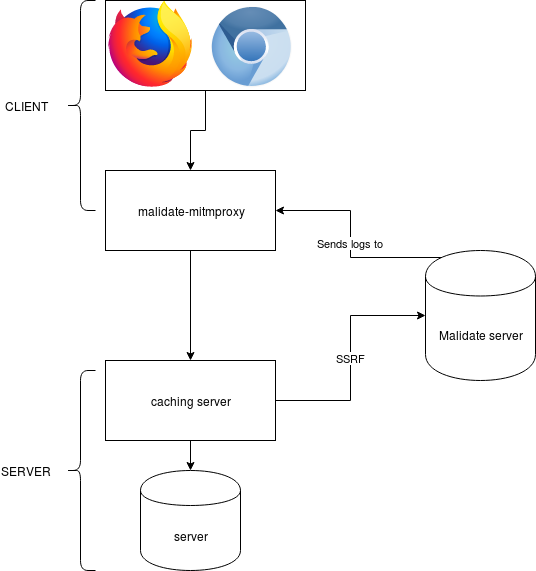What is malidate?
A few weeks ago, I read the whitepaper Cracking the Lens: Targeting HTTP’s Hidden Attack-Surface. In that paper, the author describes how “transparent systems” (like caching proxies, …) can be exploited to lead to server side request forgery (SSRF). The author chooses to use Burpsuite, a closed-source Java application with plugin support, to find vulnerabilities. The Burpsuite client is a proxy that modifies requests and communicates with Burpsuite Collaborator. Burpsuite Collaborator is a server that listens for and logs all incoming HTTP, HTTPS and DNS requests. If a server is vulnerable to SSRF, the server will connect to the Collaborator server, and the request will get logged. Later on, the client will ask the server what requests got logged, and will then tell the user what sites are vulnerable to what attack. Malidate is an opensource alternative to the Burpsuite Collaborator server, malidate-mitmproxy is an opensource plugin for mitmproxy that allows for modifying HTTP requests to exploit these attacks.
How does it work?

Security
The malidate server can be uses by multiple clients. Of course, you don’t want other clients to see what you did with the malidate server. In order to solve this, at startup, a client generates a 16-character long random alphanumeric string. Every request it makes is then prefixed by that random string. When a client then needs to get the logs from the malidate server, it asks for all logs beginning with that string. This string is mandatory and also has a fixed length (so you can’t just ask for all logs beginning with ‘a’ and so forth).
Server requirements
The server should have a wildcard HTTPS certificate and a domainname. It should whitelist ports 53 (UDP and TCP), 80 (TCP) and 443 (TCP) in the firewall.
Where can I find it?
Over here: malidate and malidate-mitmproxy.